Turacos are largely arboreal, meaning they spend most of their lives in the canopy of trees. Rwanda’s turaco family includes five actual turacos and two very closely related species, the Bare-faced Go-away-bird and Eastern Plantain-eater. The Great Blue Turaco, Rwenzori Turaco, and Black-billed Turaco can all be found in the tropical montane forests of Rwanda’s Nyungwe National Park and Gishwati Mukura National Park. The Rwenzori and Black-billed Turacos are Albertine rift endemic species, a mountain range which runs through parts of Uganda, Democratic Republic of Congo, Burundi, and the west of Rwanda.
The Purple-crested Turaco prefers the lower elevations of eastern and southern Rwanda, and can be found in Akagera National Park and in the southern Bugesera region. The Ross’s Turaco can be found below 1,600m in elevation in the right habitats across the country, including Kigali City. Ross’s Turaco preferred habitats include gallery forest, woodland, and the fruit trees found in suburban gardens. Bare-faced Go-away-bird and Eastern Plantain-eater also prefer the lower elevations of the central, eastern, and southern regions of Rwanda. Akagera National Park is arguably the best place to see large groups of Bare-faced Go-away-birds. That said, I sometimes see these awesome birds at Umusambi Village and Nyandungu Eco-Park, both of which are located on the eastern outskirts of Kigali. Nzove, which is on the northern outskirts of Kigali is a reliable place to see Eastern Plantain-eaters. To learn more about great places to go birding in Kigali, click here.
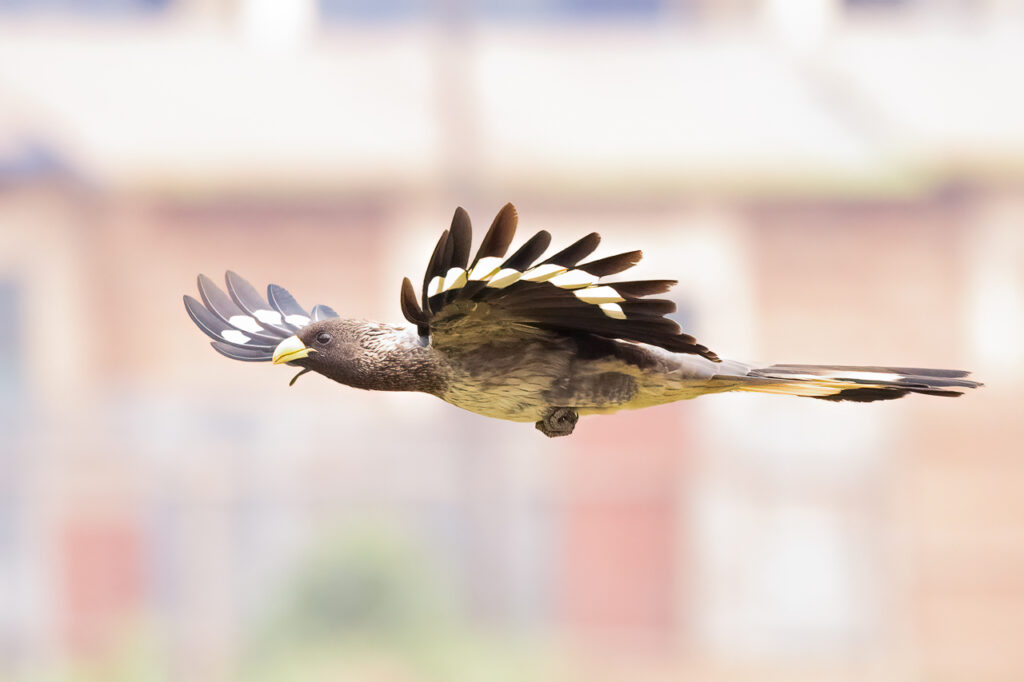
All seven species of turaco have strong bills, which besides helping with their fruit eating also assists them when climbing through trees. These awesome birds are particularly dextrous, fast, and mobile as they move through foliage and tree canopies. They run rather than hop along branches! They can do this because their outer toes are reversible – they can face either forwards or backwards, depending on whether the bird is perching or climbing. All turacos have crests, although the crest of the Eastern Plantain-eater has fallen off the top of its head and is on the back of the neck. All have relatively large bodies, short, rounded wings, and long tail feathers. Their flapping flight can be described as laboured –where possible turacos prefer to glide! On many occasions I have watched these spectacular birds scramble up to the top of trees and then glide to their next perch.
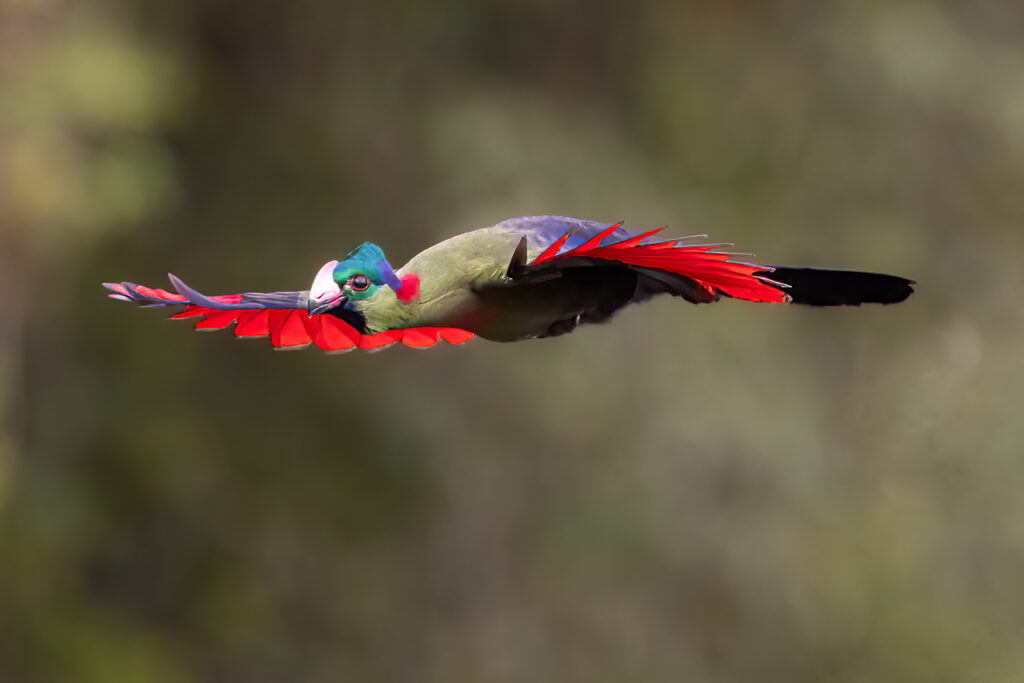
The stunning purples, greens, and reds of the five turacos are created by unique pigments (turacorvedin and turacin), not found in any other birds. All but the Great Blue Turaco has beautifully red-tipped wings, which are best seen when they are flying.
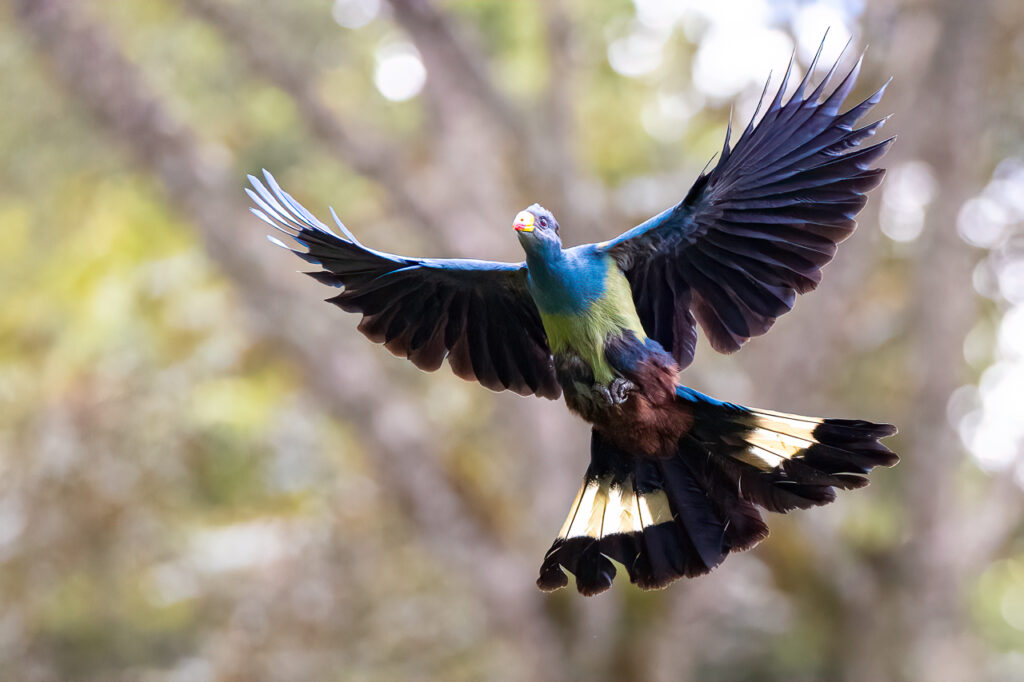
This family’s diet consists mostly of fruits, berries, and other plant parts. This diet is supplemented with insects, especially during the breeding season. The Bare-faced Go-away-bird is known to also eat soil to increase the nutrients in its diet, and groups of Great Blue Turacos can sometimes be seen foraging for moss on the side of Nyungwe National Park’s main road.
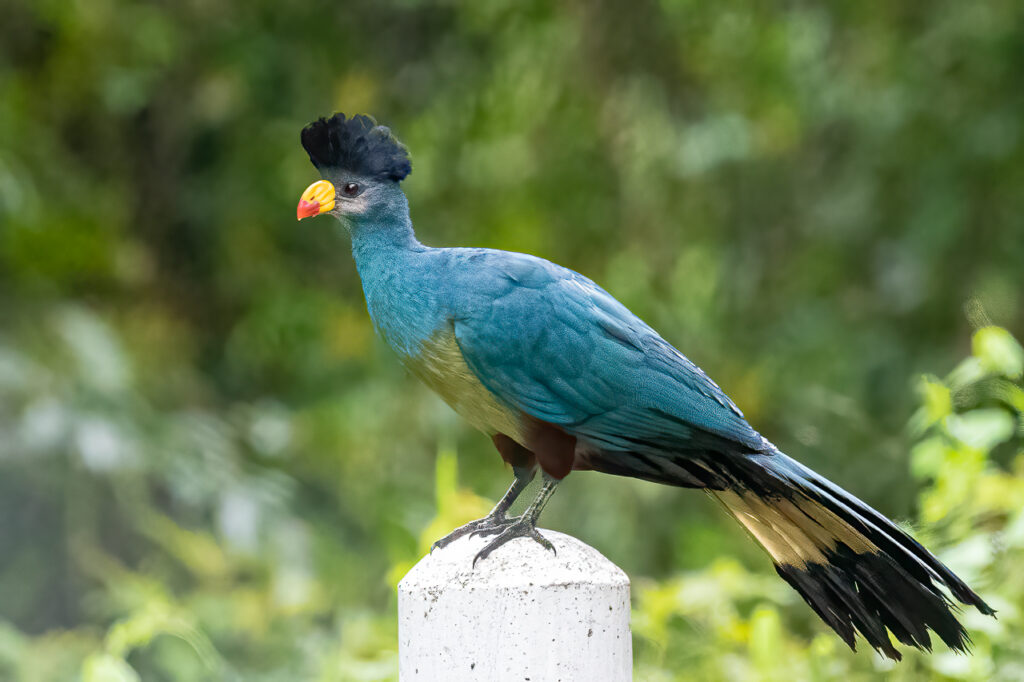
Even though the Latin name for this family of birds is Musophagidae, which translates to ‘banana-eaters’, they don’t actually eat bananas and prefer figs, guava, and the fruit from podocarpus trees. These awesome birds are great seed dispersers. Once eaten, the digestion of the fruit takes time, allowing the birds time to fly to somewhere distant from the parent tree. The seed-strewn droppings that inevitably follow enable new plants and trees to grow and contributes to forest regeneration.
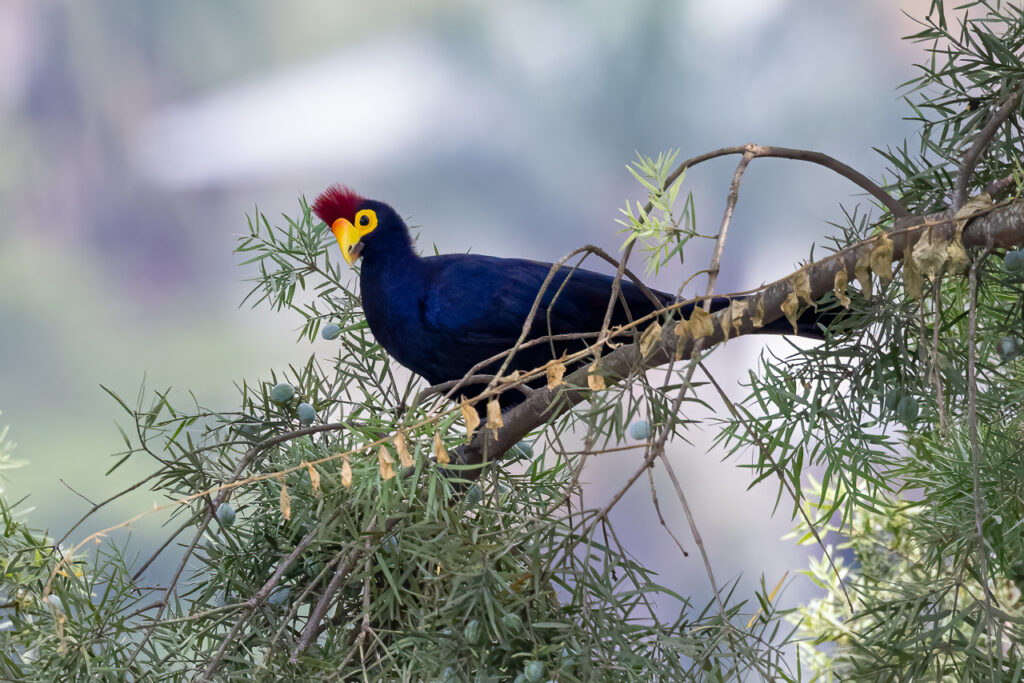
Turacos are socially monogamous and territorial during the breeding season; Ross’s Turacos will often sing duets to defend their territory, and this is a familiar sound in some parts of Kigali. During courtship displays, males will regurgitate food for their mates. Nests are untidy platforms of twigs and sticks which are sometimes lined with dried grass and smaller sticks. They are constructed by the mating pair over the course of about a week and are built high in the canopy of thick, leafy trees. The thick foliage provides some level of concealment against predators such as Blue Monkeys and baboons, as well as birds of prey like the African Goshawk and African Harrier-hawk which will raid any nests they find. Both parents will incubate the eggs and tend the nestlings.
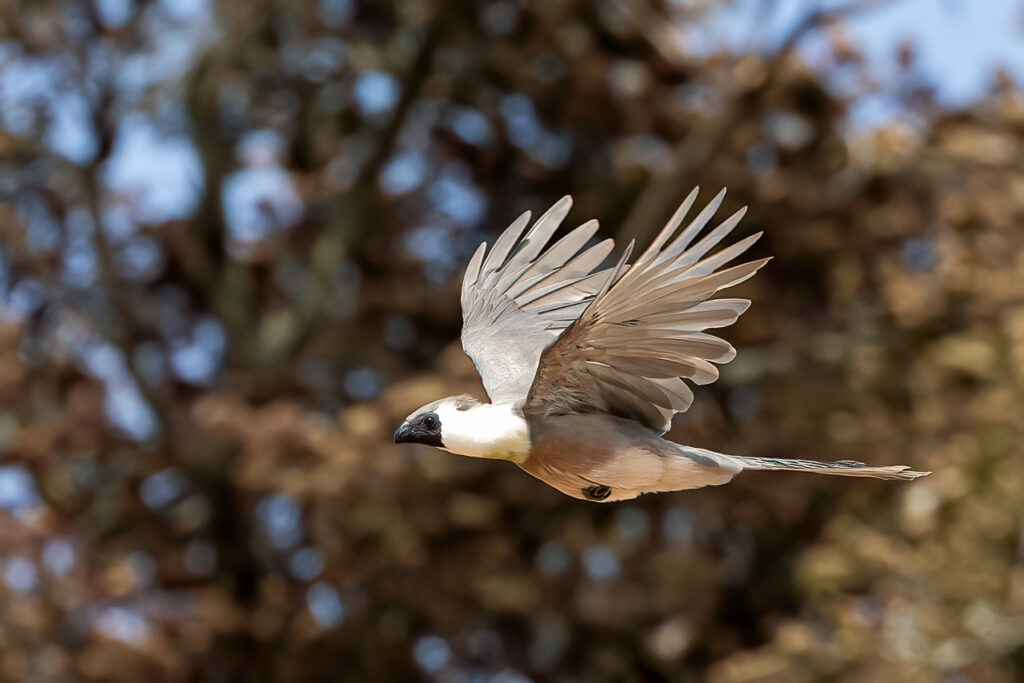
In addition to their striking appearance and feeding habits, turacos are known for their unique vocalisations. They communicate with a series of distinctive calls and songs. These vocalisations are used for various purposes, including marking territories, attracting mates, and alerting others of the presence of predators. The combination of the unique appearance and calls make the turacos a delight to listen to, watch, and photograph in the wild.


Special thanks for great news, as young Rwandan birder especially in Kigali city, this news gives me another information especially how bare-face go-away birds are included in turaco families.
Special thanks,
Experience beyond expectations,
Justin !!
You are welcome, glad you enjoyed it and found it useful!
Wonderful photos and details of their lives to make each species special… Thanks
Thank you!
Very good work!
Interesting indeed
Thank you my friend!
Wonderful piece
Thank you!
Brilliant study! All is said❤️❤️❤️
Thnank you Nikky!
This is a totally brilliant article detailing the habits as well as the lesser-known characteristics of these birds accompanied by gorgeous photography making the whole read just phenomenal. Very well done Will. CONGRATULATIONS!!!
Thank you Samir, your kind words and feedback are really aprreciated.
Thank you for sharing this article, I enjoyed reading it.
You’re welcome, glad you enjoyed reading the article.
You are very welcome!
Amazing ,Good work
Thank you.
A great review of one of the most interesting family groups in Rwanda. Well written and compelling reading and fabulous flight images. It is so hard to see turacos outside the foliage. My favorite is the great blue with it’s “purple pants”.
Thank you for the kind comments and feedback Hilary, much appreciated.